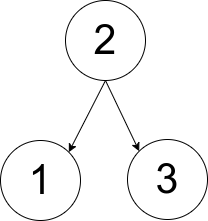You are given two integer arrays, source and target, both of length n. You are also given an array allowedSwaps where each allowedSwaps[i] = [ai, bi] indicates that you are allowed to swap the elements at index ai and index bi (0-indexed) of array source. Note that you can swap elements at a specific pair of indices multiple times and in any order.
The Hamming distance of two arrays of the same length, source and target, is the number of positions where the elements are different. Formally, it is the number of indices i for 0 <= i <= n-1 where source[i] != target[i] (0-indexed).
Return the minimum Hamming distance of source and target after performing any amount of swap operations on array source.
Example 1:
Input: source = [1,2,3,4], target = [2,1,4,5], allowedSwaps = [[0,1],[2,3]] Output: 1 Explanation: source can be transformed the following way: - Swap indices 0 and 1: source = [2,1,3,4] - Swap indices 2 and 3: source = [2,1,4,3] The Hamming distance of source and target is 1 as they differ in 1 position: index 3.
Example 2:
Input: source = [1,2,3,4], target = [1,3,2,4], allowedSwaps = [] Output: 2 Explanation: There are no allowed swaps. The Hamming distance of source and target is 2 as they differ in 2 positions: index 1 and index 2.
Example 3:
Input: source = [5,1,2,4,3], target = [1,5,4,2,3], allowedSwaps = [[0,4],[4,2],[1,3],[1,4]] Output: 0
Constraints:
n == source.length == target.length1 <= n <= 1051 <= source[i], target[i] <= 1050 <= allowedSwaps.length <= 105allowedSwaps[i].length == 20 <= ai, bi <= n - 1ai != bi
Solution: Union Find
Similar to 花花酱 LeetCode 1202. Smallest String With Swaps
Think each pair as an edge in a graph. Since we can swap as many time as we want, which means we can arrange the elements whose indices are in a connected component (CC) in any order.
For each index i, we increase the counter of CC(i) for key source[i] and decrease the counter of the same CC for key target[i]. If two keys are the same (can from different indices), one from source and one from target, it will cancel out, no distance. Otherwise, the counter will be off by two. Finally we sum up the counter for all the keys and divide it by two to get the hamming distance.
Time complexity: O(V+E)
Space complexity: O(V)
C++
|
1 2 3 4 5 6 7 8 9 10 11 12 13 14 15 16 17 18 19 20 21 22 23 24 25 26 27 28 |
// Author: huahua class Solution { public: int minimumHammingDistance(vector<int>& source, vector<int>& target, vector<vector<int>>& allowedSwaps) { const int n = source.size(); vector<int> p(n); iota(begin(p), end(p), 0); function<int(int)> find = [&](int x) { return x == p[x] ? x : p[x] = find(p[x]); }; for (const auto& s : allowedSwaps) p[find(s[0])] = find(s[1]); unordered_map<int, unordered_map<int, int>> m; for (int i = 0; i < n; ++i) { ++m[find(i)][source[i]]; --m[find(i)][target[i]]; } int ans = 0; for (const auto& g : m) for (const auto& kv : g.second) ans += abs(kv.second); return ans / 2; } }; |


